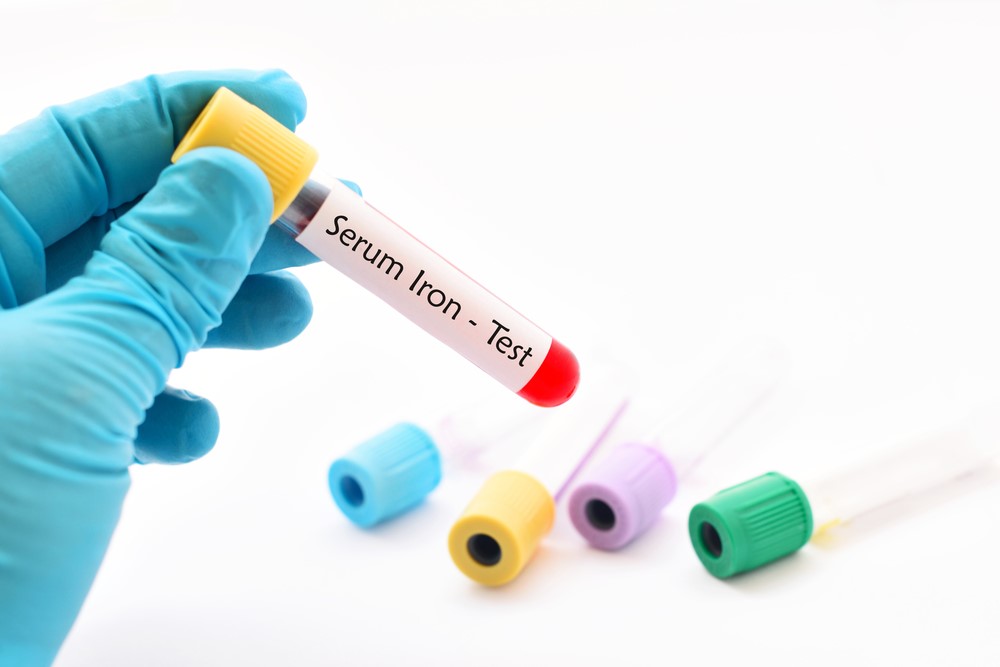
Iron, ferritin and transferrin: normal values
Iron and sideremia: iron is an essential element for the formation of red blood cell pigment and thus for the transport of oxygen to all tissues in the body
Iron is present in the body in various forms (the main one being haemoglobin iron, which makes up 65% of the total: each haemoglobin molecule can contain up to 4 iron atoms, each carrying one oxygen atom) and is transported from the plasma to the storage organs by transferrin.
The amount of iron in the blood not bound to haemoglobin is called sideremia
Normal values vary according to age and gender:
- Newborn: 170-190 micrograms per dL at birth and 50-70 after 2-3 months.
- Male: 80-170 micrograms per dL.
- Women: 60-140 micrograms per dL.
- Elderly: 40-80 micrograms per dL.
An increase from the standard values of iron levels can be caused by haemolytic syndromes (diseases in which the red blood cells split and thus pour their iron content directly into the plasma), pernicious anaemia (in which the red blood cells are huge and unstable, easily rupturing), bone marrow aplasia, acute ethylism, hepatitis, liver cirrhosis, sideroblastic anaemia.
A decrease may be due to reduced dietary intake (especially as a result of unbalanced diets or diets lacking the essential components.
The foods that contain the highest amounts of iron are: chocolate, mussels, liver, red meat, legumes.
On the other hand, it is poorly represented in vegetables in general) or from heavy menstruation, haemorrhagic losses, surgery, neoplasia in general, tuberculosis, chronic phlogosis; it commonly occurs in pregnancy and during lactation.
Ferritin
Ferritin is the iron storage protein and indicates iron levels in the body.
Each ferritin molecule can contain up to 500 iron atoms.
Normal values are 20-120 nanograms/mL for women and 20-200 nanograms/mL for men.
An increase in ferritin may indicate haemolytic syndromes, thalassaemia, inflammatory states, neoplasms, hepatitis, ethylism, cirrhosis, autoimmune diseases.
A decrease can be caused by anaemia, pregnancy, haemorrhage, impaired iron absorption, tuberculosis.
However, the clinical importance of ferritin is not paramount, as it is practically a ‘storehouse’ of iron (and thus oxygen) that can be drawn on in case of need (e.g. during intense physical exertion or in a situation requiring more oxygen, such as pregnancy and lactation).
Transferrin
Transferrin is a plasma protein used in the transport of iron in the blood.
It is only able to take up trivalent iron and is normally about 50 per cent saturated with iron.
Normal values range from 200 to 400 milligrams per dL.
An increase in transferrin can be due to iron deficiency and iron deficiency anaemia
It may also occur during pregnancy or after taking anti-concentration drugs.
The decrease may indicate haemochromatosis, hepatopathy and protein deficiency conditions.
A physiological decrease may occur in infancy or old age.
An important parameter in assessing iron metabolism is the determination of the TIBC (total iron binding capacity), which is nothing more than a number indicating the ratio between the total iron present in the serum and transferrin: if the TIBC value decreases, this means that there is a low amount of iron present in the serum or that the transferrin is completely saturated by the iron present, a situation that occurs when the body needs as much iron as possible.
Read Also
Emergency Live Even More…Live: Download The New Free App Of Your Newspaper For IOS And Android
Iron Deficiency Anaemia: What Foods Are Recommended
Increased ESR: What Does An Increase In The Patient’s Erythrocyte Sedimentation Rate Tell Us?
Anaemia, Vitamin Deficiency Among Causes
Mediterranean Anaemia: Diagnosis With A Blood Test
Colour Changes In The Urine: When To Consult A Doctor
Why Are There Leukocytes In My Urine?
How Iron Deficiency Anemia (IDA) Is Treated


